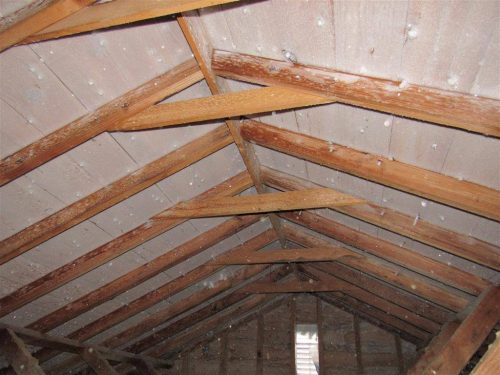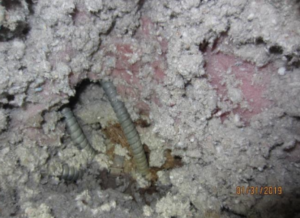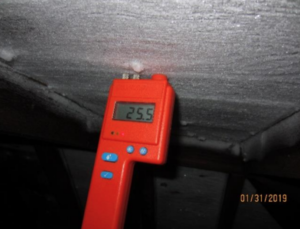The February the temperatures in Minneapolis have reached a low of -20 degrees F and a high of 40 degrees F. These are the kinds of temperatures swings we expect to see over the course of a Minnesota winter. However, these drastic temperature changes can expose symptoms from underlying problems in your home. One of these symptoms is frost in your attic.
Why is there frost in my attic?
When our team gets complaints about “booms” in the attic, ice dams, high energy bills, and leaks, we expect to see frost in the attic. This is an indicator that airflow is being allowed to move from the conditioned living space of the home into the attic. The attic is meant to be a cold space but becomes semi heated when warm air flows through hidden air passageways, known as bypasses, and into the attic.

You may be wondering what frost has to do with these open bypasses (example of open bypass shown below). Well, when warm air rises, flows through attic bypasses and meets the cold components in the attic, condensation is formed. This condensation will freeze when temperatures become low enough, hence the frost.

The frost itself isn’t a huge problem, but when the temperatures increase and the frost melts, insulation is damaged and pools of water can begin to break down crucial attic components. Even worse, the roof deck plywood can actually become delaminated if exposed to moisture for long periods of time. This means the wood literally becomes unglued. The fix for this is a replacement of the roof deck. You said it, “Expensive!”

Will Insulating My Attic Help?

Many people’s first instinct when they notice frost in the attic is to add insulation. That is NOT a solution. Insulation is irrelevant when your attic bypasses are left open for warm air to pour into the attic. See the picture above. A bathroom vent has been left to pump warm air into the attic. Remember, this warm air forms condensation when it meets the cold attic which ultimately creates moisture intrusion issues.
How Do I fix Frost In My Attic?

If you are looking for a real solution to the problem, it should be addressed in the following order:
- Seal attic bypass
- Add Insulation
- Address ventilation
Complete Building Solutions understands the science behind a healthy functioning building. We love helping clients discover hidden issues that have been producing ugly reoccurring symptoms in their home. If you have noticed leaks, ice dams, high energy bills, or frost in the attic, give Complete Building Solutions a call. We are here to help you find the culprit responsible for the issues.
Check us out on Facebook!



